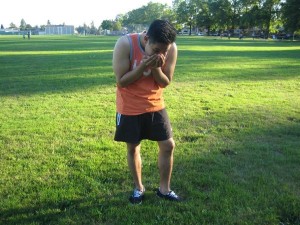A broken jaw is a prevalent form of facial injury. A fractured jaw is the one of the most common types of fracture that affects the body. Any damage in the bone or fracture can be caused by direct force or trauma to the jawbone.
The jawbone or also known as the mandible is largest and the main bone found in the lower part of the face. The areas of the mandible bone include the body which covers the chin up to the angle of the jaw and the two upward branches which are called the rami.
Men are more likely to be affected by this injury than women and those aged 20-29 years of age are typically affected. A broken jaw can be caused by assault, playing contact sports, vehicular accidents and falls. By enrolling in a course on first aid today in your area, you can readily manage the symptoms until medical care can be provided.

Symptoms of a broken jaw
- Common symptom is pain
- There is numbness in the chin or lower lip due to the damaged nerve that runs through the mandible.
- A feeling that the teeth does not fit correctly which is known as malocclusion. There is difficulty in opening the jaw fully along with difficulty in speaking and the jaws are swollen.
- Bleeding inside the mouth and there is change in the normal position of the teeth.
- There is bruising under the tongue or a cut in the ear canal caused by the backward movement of the broken jawbone.
Complications that can be caused by a broken jaw include breathing blood or food into the lungs, blockage of the airways which involves the breathing tubes leading to the lungs and pain can be felt in the jaw joints.
Treatment and home remedies
- If there is uncontrolled bleeding, difficulty in breathing or a spine injury is suspected, avoid moving the affected person.
- If the affected person is in shock with symptoms such as fainting, paleness, rapid shallow breathing, seek medical help.
- Instruct the individual to spit out all the blood inside the mouth into a handkerchief.
- Remove any broken or lost teeth from the mouth without touching the roots and immerse them in cold milk, salt water or saliva.
- Do not attempt to align the jaw
- Create a bandage using a scarf, handkerchief or necktie and secure it around the jaw and over the top of the head in order to limit movement of the jaw. The bandage should be easy to remove in case the affected person starts to vomit.
- Apply a cold compress in order to minimize swelling and pain.
Prevention of a broken jaw
A broken jaw can be prevented by taking into consideration safety measures especially when driving or engaging in contact sports. It is recommended to wear seat belts while driving and use proper protective gear when playing contact sports.